SCHIESS: Population study at Henrys Lake show slightly fewer trout
Published at | Updated at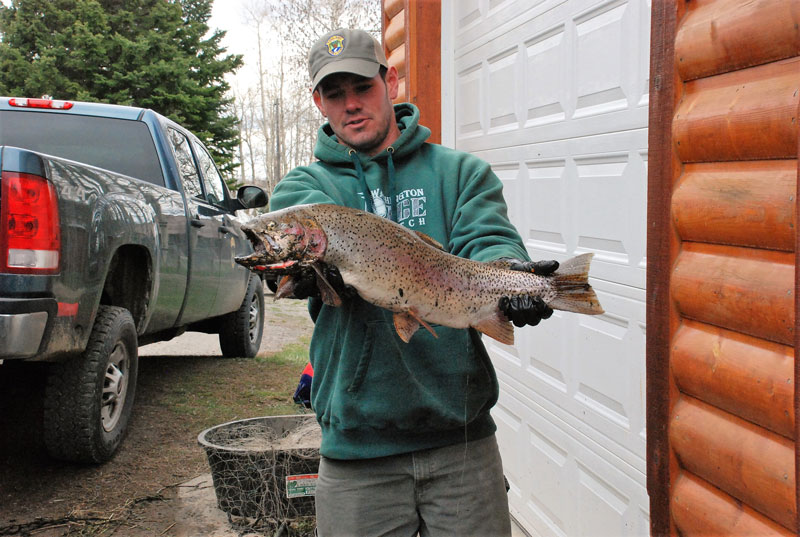
The Idaho Department of Fish and Game is trying to determine the population of fish in Henrys Lake.
The process, completed annually, is nearly done with 44 nets set as of Tuesday. Tuesday’s six nets produced less fish than any other day of this year’s take with 17 trout and 20 chubs with no brook trout.
“This year there were no big days except for the first day when we had 10 trout with no chubs in one net and then in our last set we had one net off the Cliffs produce well,” Damon Keen, manager of the Henrys Lake Hatchery, said Tuesday. “This is why we set and recover the fish from 50 nets in about nine days as we need a good sampling of what fish are in the lake.”
For the last nine years, Fish and Game personnel have tried to determine the population of the lake by placing nets in the same six locations in the evenings and then pulling them the next morning. Three of the nets are “floaters” targeting the top four feet of the water while three more are “sinkers” that are set to capture fish near the bottom of the lake. The two types of nets are randomly set at these permanent locations.
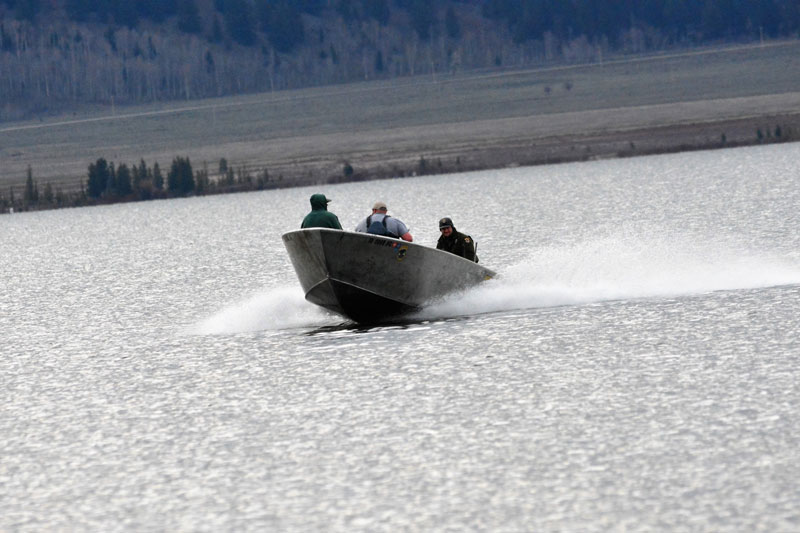
This year the sinking nets have been the most productive over the floating ones and in Tuesday’s collection one floating net had no fish at all with another one having only one 12 inch cutthroat. The numbers captured this year has been about half of the goal according to Keen.
“We have a goal of managing the lake so we will be able to average 11 trout per net per night,” Keen said. “As of Tuesday we are averaging 5.5 trout compared to 8 last year. The good thing is that we have a median of two of chubs compared to a median of five last year. That means of the 44 nets gathered 22 of them had either none or only one chub in them.”
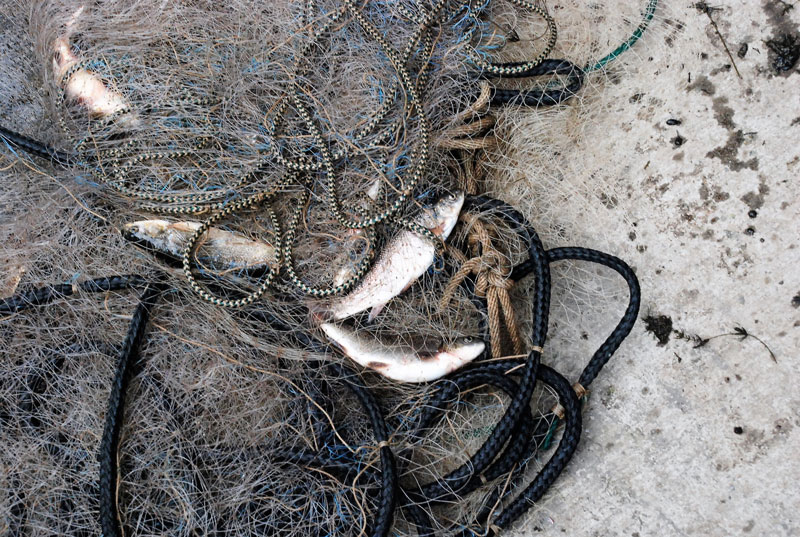
The strongest age class of trout collected in the nets have been the two-year olds that are running between 10 to 16 inches. The three- and four-year olds are weak in numbers due to lower stocking numbers, poor survival rates and poor natural recruitment from the streams. The life expectancy for trout in Henrys Lake is about four years with some of the trophy hybrids reaching five years of age.
“We are seeing larger fish for their age class with the low numbers, but we need to get the population up a bit,” said Keen. “This year we will increase our stocking to 200,000 brook trout, 200,000 hybrids and one million cutthroats. Hopefully the streams will continue to run enough water into the lake to keep the water temperature low so we will have better fishing conditions and more recruitment from the streams.”
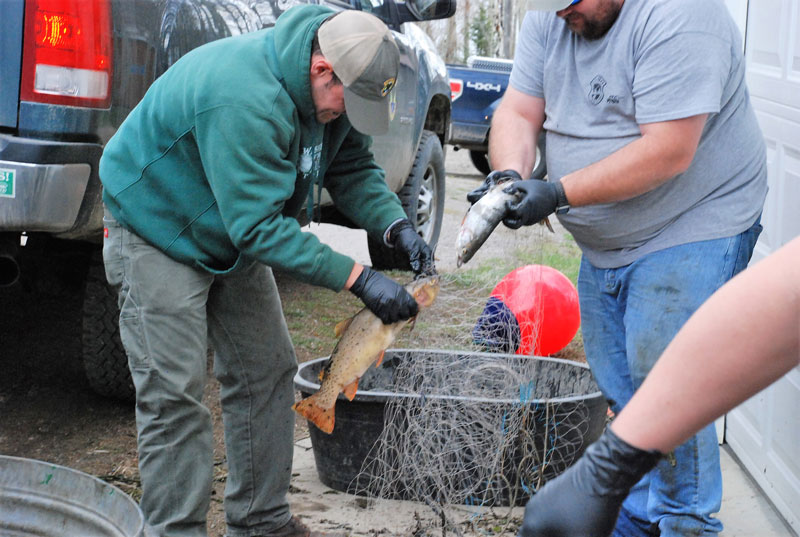
Last year with low runoff and high June temperatures, the water temperature climbed to 70 degrees before the end of June and in 2015 water temperatures rose to 75 degrees. At those temperatures the trout go dormant and do not feed making it difficult to catch them. An extensive creel survey is taken every three years of fishermen on the lake and in 2013, fishermen caught an average of one fish per hour while last year the average was .36 per hour.
Fish population in Henrys Lake is only one factor for good fishing. Water temperature, weather patterns, fish movement and fishing effort also affect catch rates. Detailed records of the catch rates last year found the slowest months for fishermen success were June, November and December. Fishing success was best during the last half of August and September.
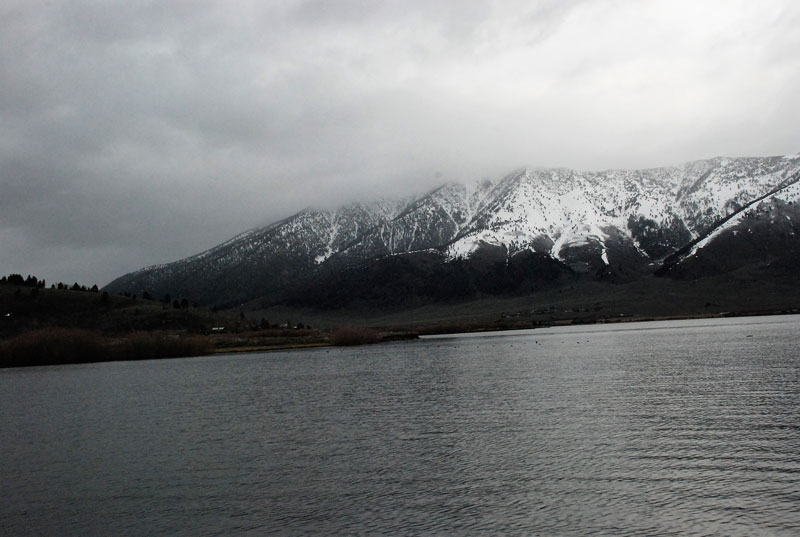
With the lower numbers of trout in the gillnets than in previous years, fishing could be poor; but if the water temperatures stay low, those fish in the famed lake may be on a feeding frenzy, growing up to an inch per month. That would put many of the now two-year olds near 20 inches and the gillnetting has produced hybrids from six to 10 pounds.
“I am an eternal optimist and the fishing is going to be good until proven otherwise,” Keen said. “We have less than a month before it opens and then we will know how well the lake will produce.”
Living the Wild Life is brought to you by The Healing Sanctuary.


